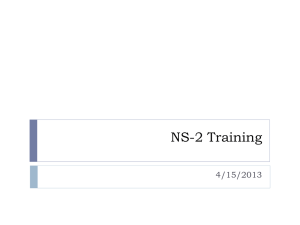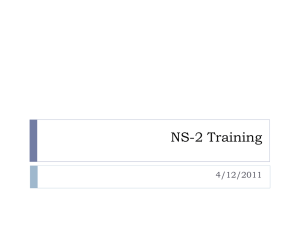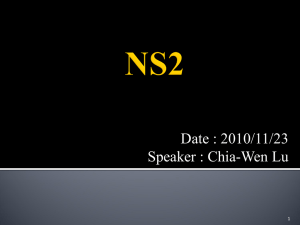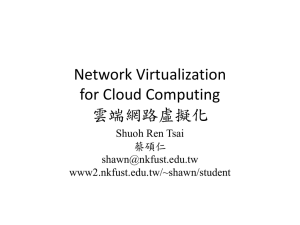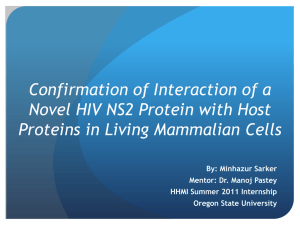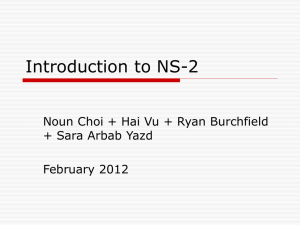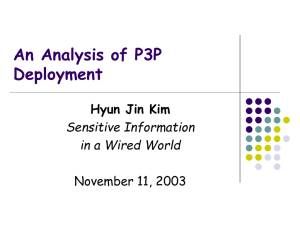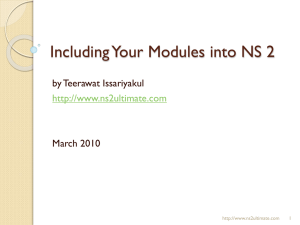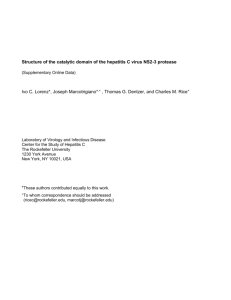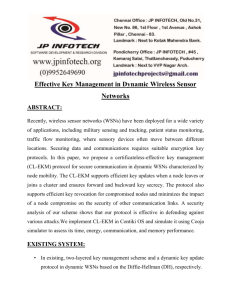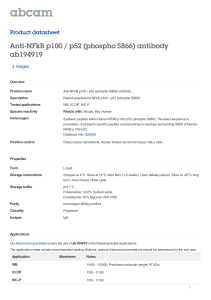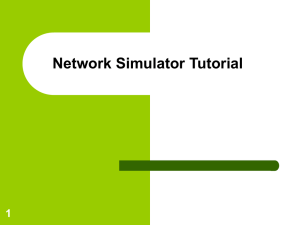ns2
advertisement
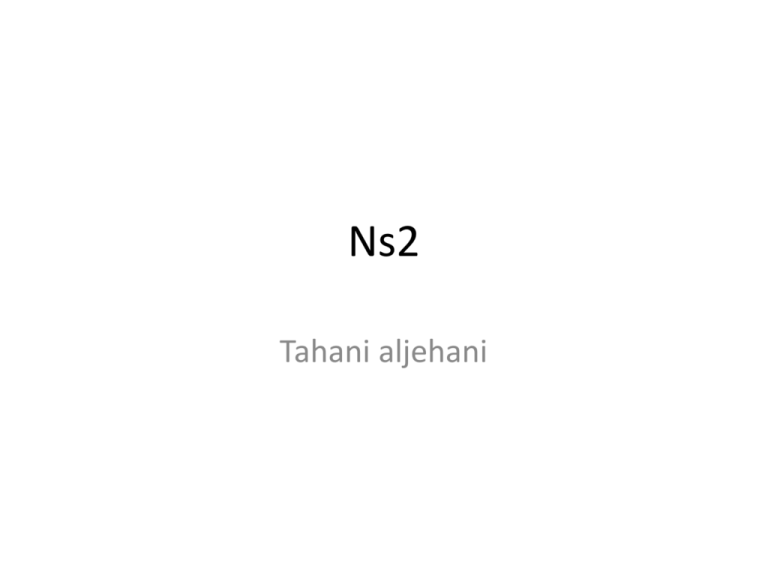
Ns2 Tahani aljehani NS2 • Developed by UC Berkeley • Maintained by USC • Popular simulator in scientific environment NS2 Goals • To support networking research and education – Protocol design, traffic studies, etc. – Protocol comparison; – New architecture designs are also supported. • To provide collaborative environment – Freely distributed, open source; – Increase confidence in result Two Languages: C++, OTcl OTcl: short for MIT Object Tcl, an extension to Tcl/Tk for object-oriented programming. • Used to build the network structure and topology which is just the surface of your simulatoion; • Easily to configure your network parameters; • Not enough for research schemes and protocol architecture adaption. Two Languages (Con’t) C++: Most important and kernel part of the NS2 • To implement the kernel of the architecture of the protocol designs; • From the packet flow view, the processes run on a single node; • To change or “comment out” the existing protocols running in NS2; • Details of your research scheme. Why 2 Languages? • 2 requirements of the simulator – Detailed simulation of Protocol: Run-time speed; – Varying parameters or configuration: easy to use. • C++ is fast to run but slower to code and change; • OTcl is easy to code but runs slowly. Protocols/Models supported by NS2 • Wired Networking – Routing: Unicast, Multicast, and Hierarchical Routing, etc. – Transportation: TCP, UDP, others; – Traffic sources: web, ftp, telnet, cbr, etc. – Queuing disciplines: drop-tail, RED, etc. – QoS: IntServ and Diffserv Wireless Networking • Ad hoc routing and mobile IP – Routing Protocol: AODV, DSDV, DSR, etc. – MAC layer Protocol: TDMA, CDMA(?), IEEE Mac 802.x, etc. – Physical layers: different channels(?), directional attena • Sensor Networks Ns2 Code explanation • Create the event scheduler (simulator) Ns2 Code explanation • Create network topology • Create connection (transport) • Create traffic (application) Ns2 Code explanation • Schedule events Ns2 Code explanation • Start the scheduler Create node Link the node Important notes Agent and application Agent and application Agent and application Agent and application Task1 • Download examble1b.tcl file from lectures site • Run the file • Read the result • Explain the code Task2 • Write the TCL script for the following network Home work • Extend your work : • Assume no is source and n2 is destination • Apply TCP agent using [new Agent/TCP] and [ new Agent/TCPsink] • Apply ftp application [ new Application/FTP] • Run the network Useful references • http://www.cs.odu.edu/~mweigle/research/n etsim/intro/
